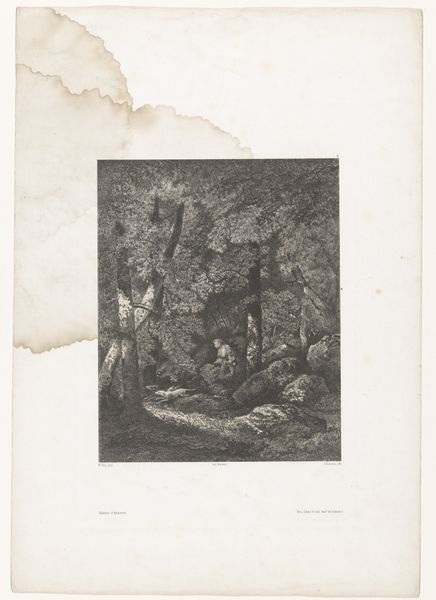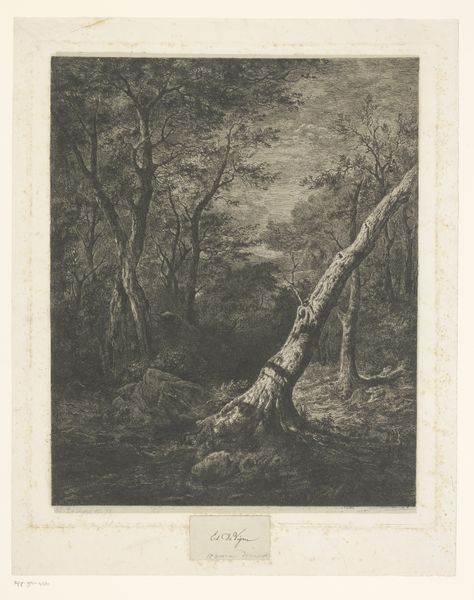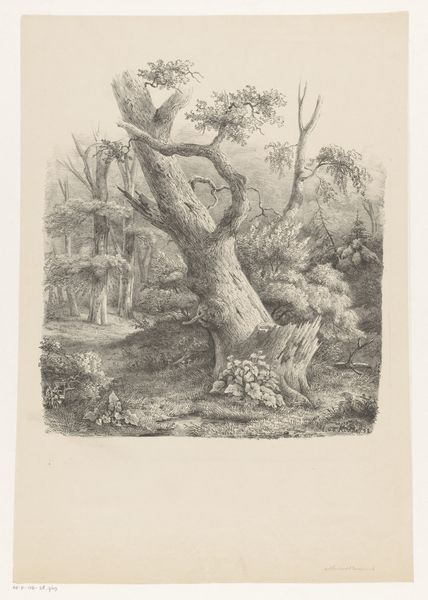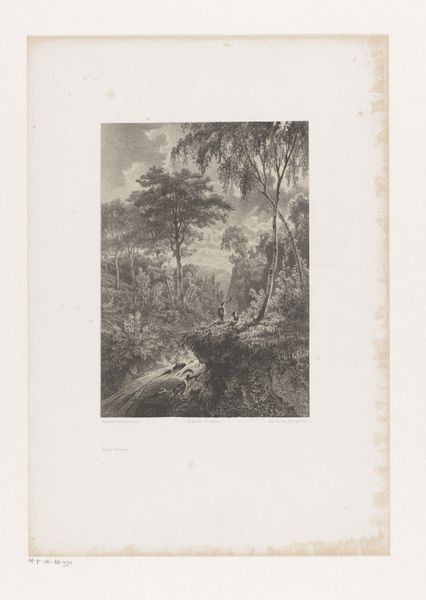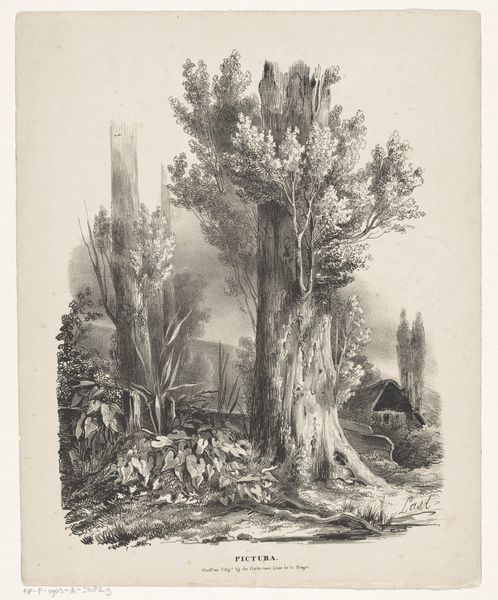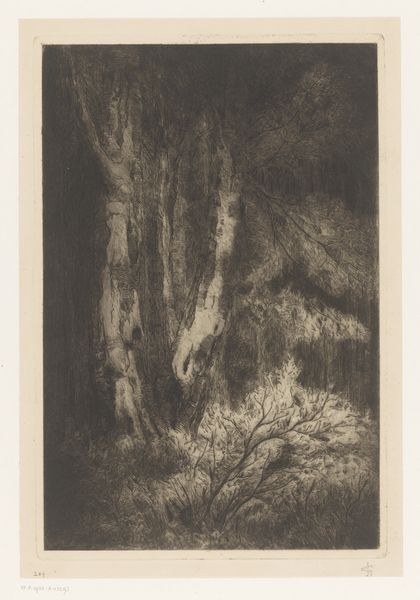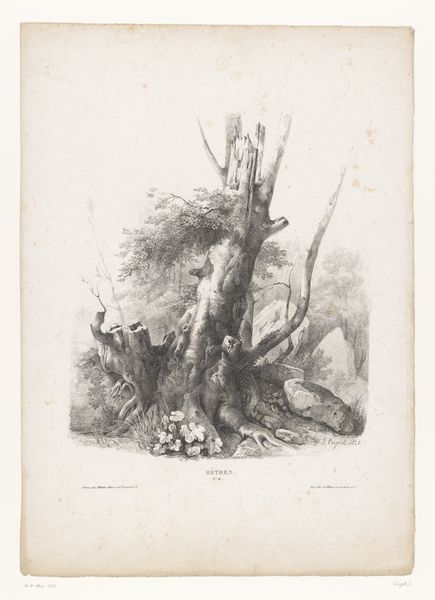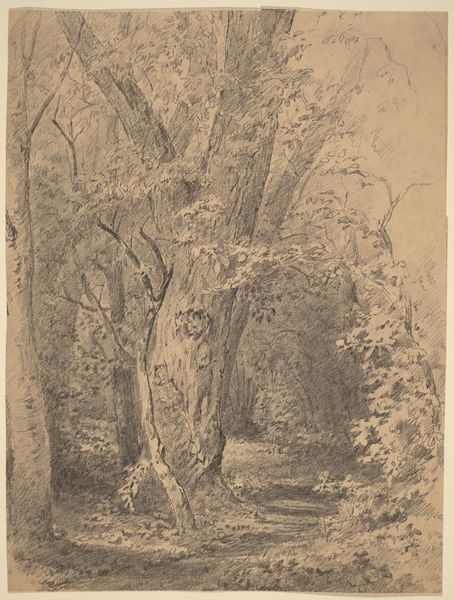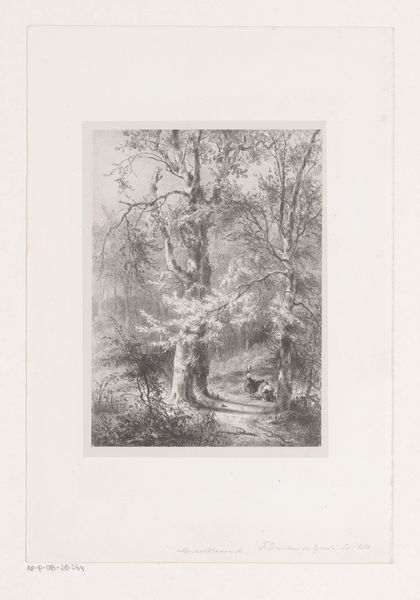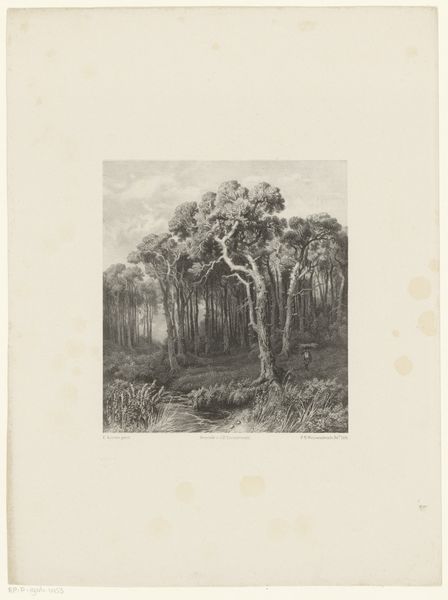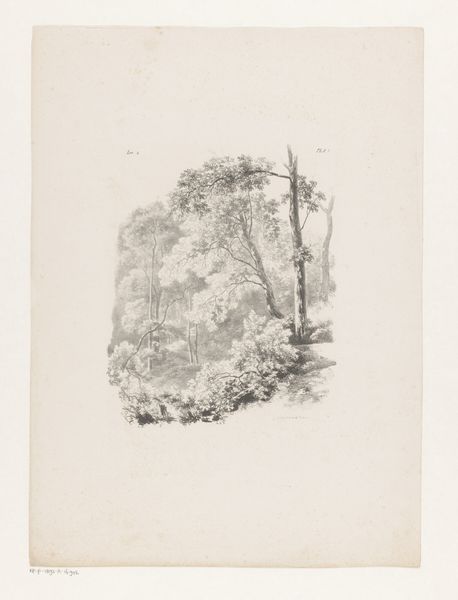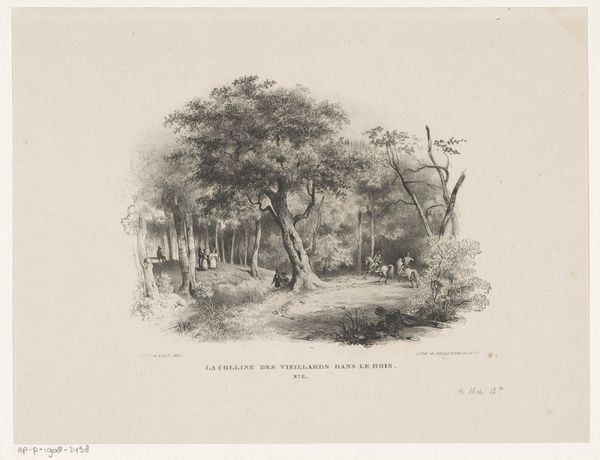
drawing, print, paper, engraving
#
drawing
# print
#
landscape
#
paper
#
romanticism
#
chiaroscuro
#
engraving
#
realism
Dimensions: height 418 mm, width 288 mm
Copyright: Rijks Museum: Open Domain
Curator: Welcome. Today, we are looking at Louis-Julien Jacottet’s "Bomengroep in een bos," or "Group of Trees in a Forest," created around 1836 to 1838. The piece, residing here at the Rijksmuseum, is an engraving on paper. Editor: It has a rather somber feel. The gray scale is dense. The lines in the engraving almost vibrate, lending the entire composition an anxious energy, like static electricity before a storm. Curator: That tension, I think, emerges from the artist's engagement with Romanticism—particularly its fascination with the power of nature and the emotional impact of landscape. You see that in how Jacottet uses chiaroscuro, creating dynamic light and shadow. Consider how the means of print production, particularly engraving, aided this: repeatable, reproducible for mass consumption of imagery... Editor: Yes, the contrasts certainly define the structure. Look at the central tree; the way Jacottet articulates the knotted roots with incredible detail juxtaposes with the hazy background. The use of line is stunning; its fineness captures the bark's texture and root system with real precision, then dissolves into almost nothing in the mist. Curator: And think about what engraving meant at the time. This was not just about art, but about disseminating knowledge, creating a visual inventory of the natural world. An important industry. Did Jacottet himself print and distribute this? Where was his workshop, and what did he and his fellow artisans produce aside from artworks? Editor: An important point to keep in mind, and it resonates within the stylistic elements we see—a beautiful balance of realism and Romantic ideals. But, beyond the social contexts and the economic realities of its creation, this print succeeds because of its powerful visual vocabulary: stark contrasts, almost photorealistic details in the foreground, the eerie diffusion of the forest background... Curator: The intersection, though, of all of this—the material conditions of Jacottet's labor, alongside the artistic choices – helps us really understand not just the "what" but the "how" and "why" of the piece, revealing this cultural moment... Editor: Certainly. It’s precisely how these factors come together—Jacottet’s artistry mediated through material realities—that makes this work still able to grab us nearly two centuries later. A complex picture made via relatively simple material means.
Comments
No comments
Be the first to comment and join the conversation on the ultimate creative platform.

